How to plant and grow geraniums from seeds?
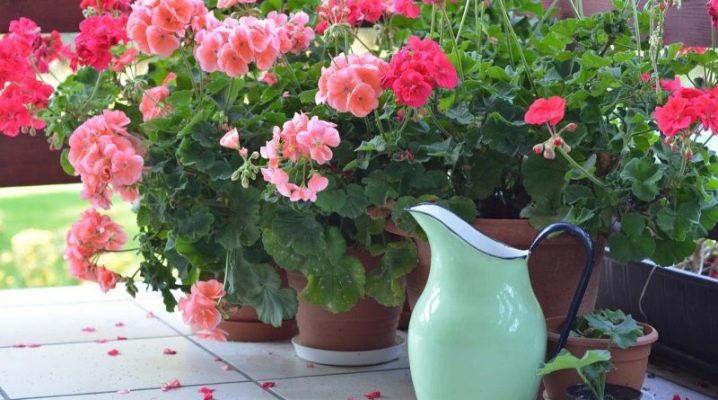
Despite the huge assortment of flower shops and an abundance of exoticism, the window sill with blooming geraniums still evokes affection. The childhood home immediately pops up in my memory. Grandma or mom watering flowers. The incomparable smell of leaves rubbed in hand.
There is a widespread belief among amateur flower growers that geranium and pelargonium are synonyms, the names of the same plant. In fact, these are two completely different species, having some common features. According to the botanical classification, both of them belong to the Geraniev family.
Peculiarities
Geranium is an outdoor cold-resistant perennial. The name comes from the Greek word meaning "crane" in translation, as the ripe seed pods are shaped like a crane's beak.

It grows in temperate climates, in European countries and in the United States of America. Leaves are pinnate and finger-like, indented, of various shapes. The flowering is rather modest, with two or three flowers on high peduncles. On the territory of the Russian Federation, there are about forty varieties of this plant.
Cultivated varieties can grow without transplanting, without losing their decorative properties, from 8 to 15 years in one place. Terry species were bred, as well as with yellowing and reddening leaves in autumn. Unlike geraniums, pelargonium is thermophilic.
The name of the plant is also associated with the elongated shape of the fruit, similar to the beak of a crane. Only in this case it is already a Latin word.
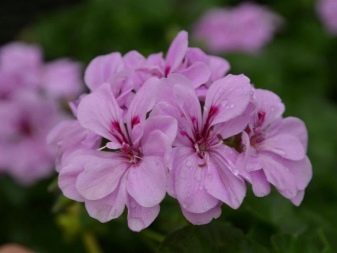

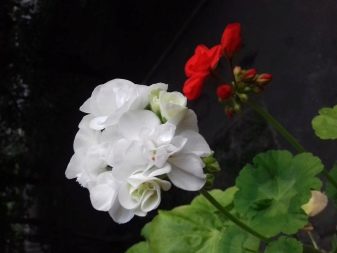
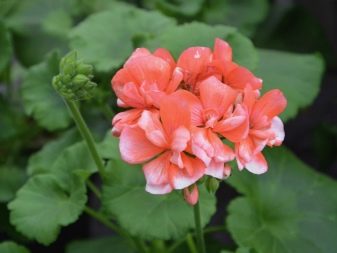
At home, in South Africa, pelargoniums are perennial shrubs or grasses. In the climatic conditions of Central Russia and the North of Russia, it is more often grown as an indoor potted crop or as a garden annual, through seedlings. Pelargonium leaves are slightly dissected, finger-like, evergreen. It blooms profusely and very beautifully: flowers of medium and large size, of a wide variety of colors, collected in large lush umbrella-shaped inflorescences.
These are the main differences between pelargonium and geranium. But, since the name "geranium" is more familiar and widespread, it will be used in the future to refer to both plants. In general, both of them are unpretentious, do not require special care, and even the most inexperienced novice florist can easily grow them. Propagated by dividing the bush, cuttings, as well as sowing seeds, which you can buy in flower shops or try to get it at home.


When to sow?
First of all, it is necessary to pay attention to the fact that geranium seeds must be viable, of high quality, obtained from a healthy plant. Even with good, abundant flowering, geraniums in the room may not produce seeds, pollination is essential here. To do this, the pots are placed on an open balcony, terrace, or just in the garden.
If this is not possible, you can “work as a bee,” that is, transfer pollen from one flower to another using a soft brush. After the end of flowering, a seed capsule will form. When it is fully ripe and dry, the planting material is removed. You can grow seedlings in the room in any season, however, the best planting dates are in the spring, when daylight hours begin to increase. In winter, young plants need to be illuminated.
Perennial garden geraniums of various types require spring planting through seedlings or sowing directly into the ground.The flowering time is varied. For example, Georgian geranium can be seen in all its glory in mid-June, for 40-45 days.
Favorable days for sowing are determined by the lunar calendar.
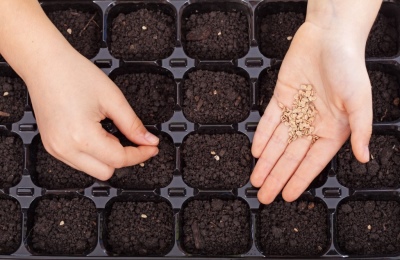
Preparation
Before tackling sowing directly, some preparatory work needs to be done.
- Sorting seeds. Small, flattened, damaged seeds with an unusual color are discarded. Ripe seeds should be quite large, elongated, brown in color, with a dense leathery surface, without spots or damage.
- Scarification. This is scratching the surface of the seed coat with some sharp instrument (for example, a file, a nail file, or at least sandpaper). Everything must be done very carefully, remove only the top layer, trying not to damage the seed. This procedure is necessary for faster emergence of sprouts. If you neglect it, seedlings can appear only after two to three months.
- Soil preparation. Land for planting geraniums can be bought in a specialized store, but it is better to prepare it yourself. There is nothing complicated about it. You will need to take two parts of sod soil and one each of sifted river sand and high-quality peat. Mix everything thoroughly and place in a preheated oven for three to five minutes. You can also spill the soil with hot water with manganese or use modern biofungicides (prepare according to the instructions on the package).
- Disinfection of planting material. Most often, it is advised to use a pink solution of potassium permanganate for seeds, but many prefer to soak them for 15-20 minutes in ordinary hydrogen peroxide or also take fungicides (for indoor plants).
- Soak. The disinfected seeds are poured with water at room temperature and left for two to three hours to swell.
Planting methods
It is best to plant geranium seeds in flat containers, about 4-5 centimeters high. For this purpose, it is good to prepare transparent food containers with lids.
The container is filled with soil, not reaching the edge of a centimeter and a half, tamped a little by hand, leveled. Then, with a stick or finger, they make small indentations at a distance of 4-5 centimeters from each other. Seeds are placed in the holes and sprinkled with a thin layer of earth. Slightly compact and moisturize with a sprayer.

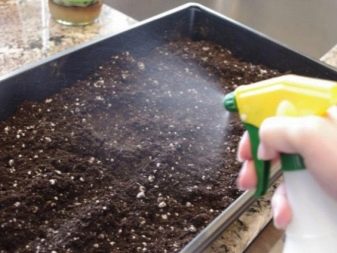
It is necessary to maintain a constant temperature and humidity of crops, to provide air ventilation. To do this, the container is covered with a lid or plastic wrap on top, in which small holes are punctured.
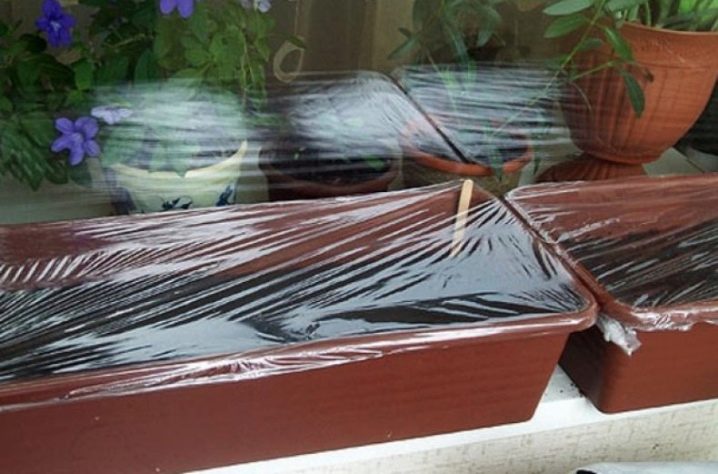
So that shoots appear sooner, you can use a simple method - germination on toilet paper. Processed, soaked seeds are laid out on a damp strip of paper, placed in a container with a lid, and placed in a warm place. As soon as white sprouts hatch, the seeds are carefully planted in the ground, trying not to damage. Also, for hardening and better growth, crops can be kept in the refrigerator for 7-10 days.

It is convenient to grow geraniums using peat tablets. In this case, the plant will not be injured when transplanted into a larger pot, the root system develops without damage. It is best to buy small tablets. To prepare the tablets for planting, they need to be soaked; for this, the products are placed in a wide and deep bowl (considering that when they swell, they will increase in size by about six times) and poured with warm water.
As soon as the peat is soaked, depressions are made in the tablets and the seeds are planted, sprinkling them with earth or peat. It should be remembered that you cannot keep crops until shoots appear on the windowsill, especially in bright sun.
However, the room temperature should not drop below 20-22 degrees.
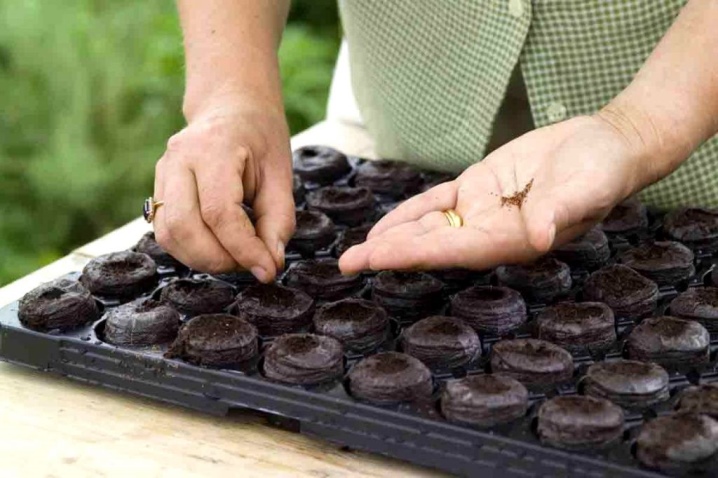
How to care for seedlings?
To get healthy and beautiful plants, you need to grow good seedlings.First, the seeds should be germinated, wait for the shoots to appear. After that, the lid is removed from the container and placed in a well-lit, warm place. Timely watering is organized, since young plants can quickly die from a lack of moisture. You can water by sprinkling or with a teaspoon under each bush. At the same time, water stagnation must be avoided, this leads to decay and death of seedlings.
Also, the earth must be periodically loosened to provide air access to the roots. Of course, this should be done very carefully. Top dressing at such a young age of seedlings is not yet needed, since the soil has the necessary supply of nutrients.

When to dive?
After young seedlings have two pairs of real, not cotyledonous leaves, you can start transplanting into separate pots, about 10 centimeters in diameter and 12-15 centimeters high.
Picking seedlings is a very important operation. The main thing is not to miss the right moment, and to separate the plants until their roots are intertwined. Separate with a fork, teaspoon or small spatula to care for indoor flowers. Water abundantly before starting work.
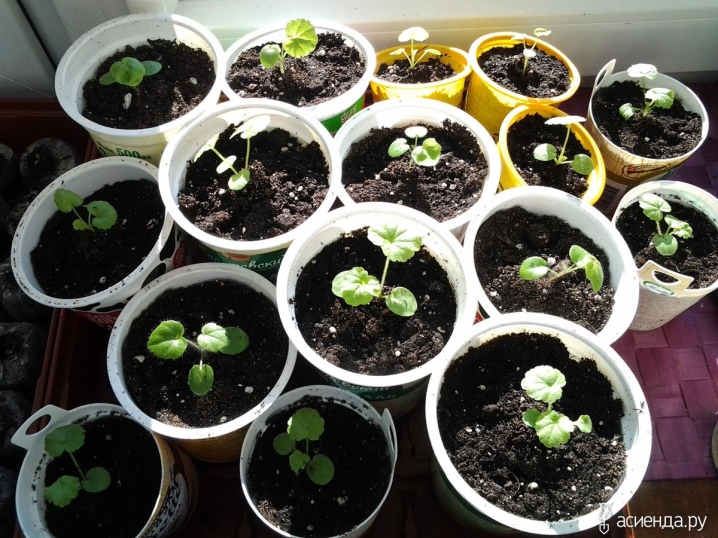
At the bottom of each pot, expanded clay (perlite, vermiculite) is laid with a layer of one and a half to two centimeters, for drainage. Then it is filled with soil by two-thirds of the volume, a dug seedling is placed in the middle, and the earth is carefully poured to the desired height. Press lightly with your fingers, tighten. Water a little, along the edge of the pot, so as not to blur the earthen lump.
In the early days, cut seedlings need shading from direct sunlight. In the future, he feels good in bright light, on the southern windows. Well-planted geraniums germinate quickly and look healthy. So that in the future the bushes do not stretch out and please with an abundance of flowers, pinch the tops as they grow.
Separately, it should be said about the seedlings of street varieties: the seedlings need to be hardened, kept in a cool, but well-lit place before planting in the ground. If possible, it is recommended to transplant it into a nursery or greenhouse.
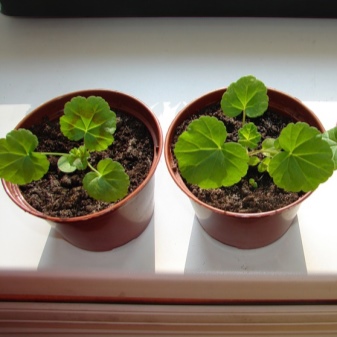
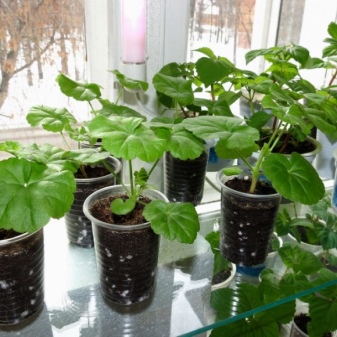
Florist tips
Although geranium is a non-capricious plant, it reproduces well, grows and blooms with minimal care, at first the seedlings require increased attention.
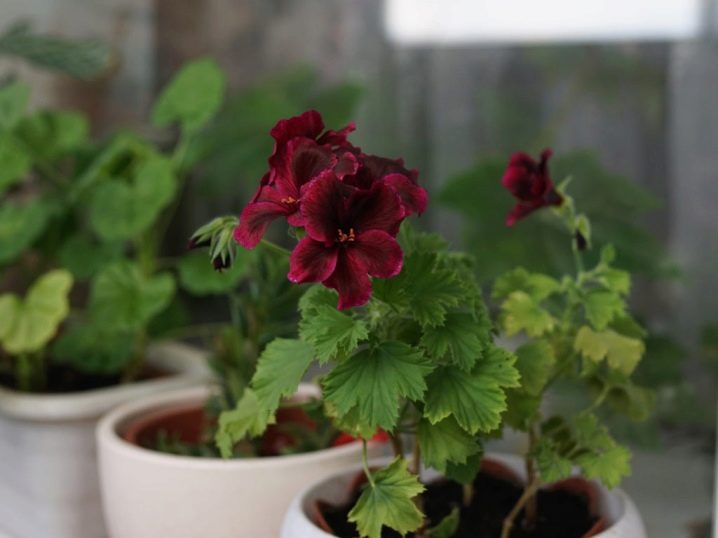
Here are some tips and secrets from experienced florists.
- Buy seeds from reliable producers, do not get hooked by bright, tempting advertisements, and do not chase after cheapness.
- The composition of the store soil should not contain a lot of minerals - this is harmful to geranium. When making the mixture at home, adhere to the recommended proportions (two parts of earth and one each of sand and peat).
- Disinfect the soil and planting material.
- Scale seeds to speed up germination.
- After sowing, cover the container with a film, strictly observe the temperature regime and monitor the humidity. Water carefully, with a spray bottle, try not to overdo it. Be sure to shade the container from direct sun exposure.
- As soon as the first shoots appear, remove the film, put the container on the windowsill.
- When planting in the fall and winter, apply artificial light to lengthen the daylight hours.
- Dive when the plant has at least two true leaves.
- Plant geraniums in small pots with drainage holes; be sure to lay a layer of expanded clay on the bottom.
- Pinch the top over 5-6 leaves, so the plant will be more lush.
- Temper street geraniums before planting in open ground by exposing them to fresh air.
- Indoor varieties do not like large pots, and will not bloom until the roots fill the entire earthy ball. Therefore, it is better to replant them not too often.
By adhering to these simple recommendations, you can grow geraniums from seeds and enjoy the beauty of its flowering all year round.
For information on how to sow geraniums from seeds, see the next video.







































































































The comment was sent successfully.